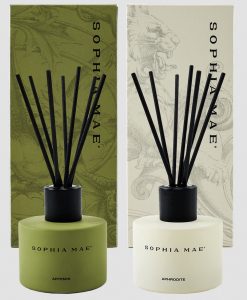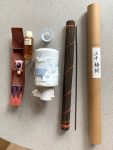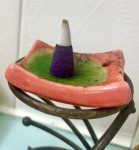Aromatherapy history and theories
In TCM explained 3. a focus on aromatherapy, what it is, its effectiveness, the different forms and implications for your health.
Do not misunderstand, I actually often use TCM, especially special home-made teas that I drink on a daily basis. But some aspects of TCM are rather doubtful in its effectiveness.
Aromatherapy is based on the usage of aromatic materials, including essential oils, and other aroma compounds, with claims for improving psychological or physical well-being. It is offered as a complementary therapy or as a form of alternative medicine.
The act of burning incense has been an important ritual since ancient times. Believed to have originated in Egypt in the time of the Old Kingdom, it was once used by priests for fumigating tombs. Incense has a long history of being used in conjunction with ceremonies, rituals, and spiritual and religious occasions.
Incense burning was also discovered in India and Southern Asia as early as 3300 BC. Used alongside worship and prayer, it was believed that burning incense could ward off evil spirits while purifying the surroundings.
 I remember assisting mass when I was young and the incense burner going around.
I remember assisting mass when I was young and the incense burner going around.
Aromatherapists, people who specialize in the practice of aromatherapy, utilize blends of supposedly therapeutic essential oils that can be used as topical application, massage, inhalation or water immersion. There is no good medical evidence that aromatherapy can either prevent, treat, or cure any disease.
The point of aromatherapy is the smell of the products. There is disputed evidence that it may be effective in combating postoperative nausea and vomiting.
Now more about different forms of aromatherapy.
Incense sticks, cones and essential oils
Incense sticks are some of the most typical aromatherapy products. They are used to fill a room with sweet and aromatic scents, calming the mind and body, and more.
The Health Risks from Incense Burning are however serious: Harmful Constituents in the Incense Smoke – a scientific paper.
Yes, burning incense and cones is bad for you.
According to the EPA, exposure to the particulate matter (PM2.5 in particular) present in incense smoke has been linked to asthma, lung inflammation and even cancer. In fact, long-term exposure to incense smoke was found to be related to an increased risk for upper respiratory cancers as well as squamous cell lung cancer.
The findings, published in Environmental Chemistry Letters, showed that incense smoke is mutagenic, which means it can cause mutations to genetic material, primarily DNA. Compared to the cigarette smoke, the incense products were found to be more cytotoxic (toxic to cells) and genotoxic (toxic to DNA)
See a variety of incense sticks and cones; also essential oil diffusors, electric or using a candle, pleasant smell and not polluting.
The pollution measurement I did shows how bad the incense sticks are… and the particles hang in the air for a very long time!
Incense cones appear to be even more problematic for air pollution compared to incense sticks.
Fragrance sticks
Fragrance sticks are absorbent sticks which have been placed in a jar of fragrance oil. The stick draws up the oils and their scent evaporates into the room.
Reed diffusers are safer and healthier than many types of scented products. Reed diffusers, quite simply, do not make use of flame. This is not only safer, as it means that reed diffusers do not pose a fire risk.
 I don’t like that one can find the complete sets but never the replacement liquid. So, sticks and container can only be used once and then thrown away.
I don’t like that one can find the complete sets but never the replacement liquid. So, sticks and container can only be used once and then thrown away.





Some websites give more details about aromatherapy, like this one (https://violetcrownrejuvenation.com/blogs/our-blog/burning-incense). At least they recommend: “Always burn incense in a well-ventilated area”. But still…